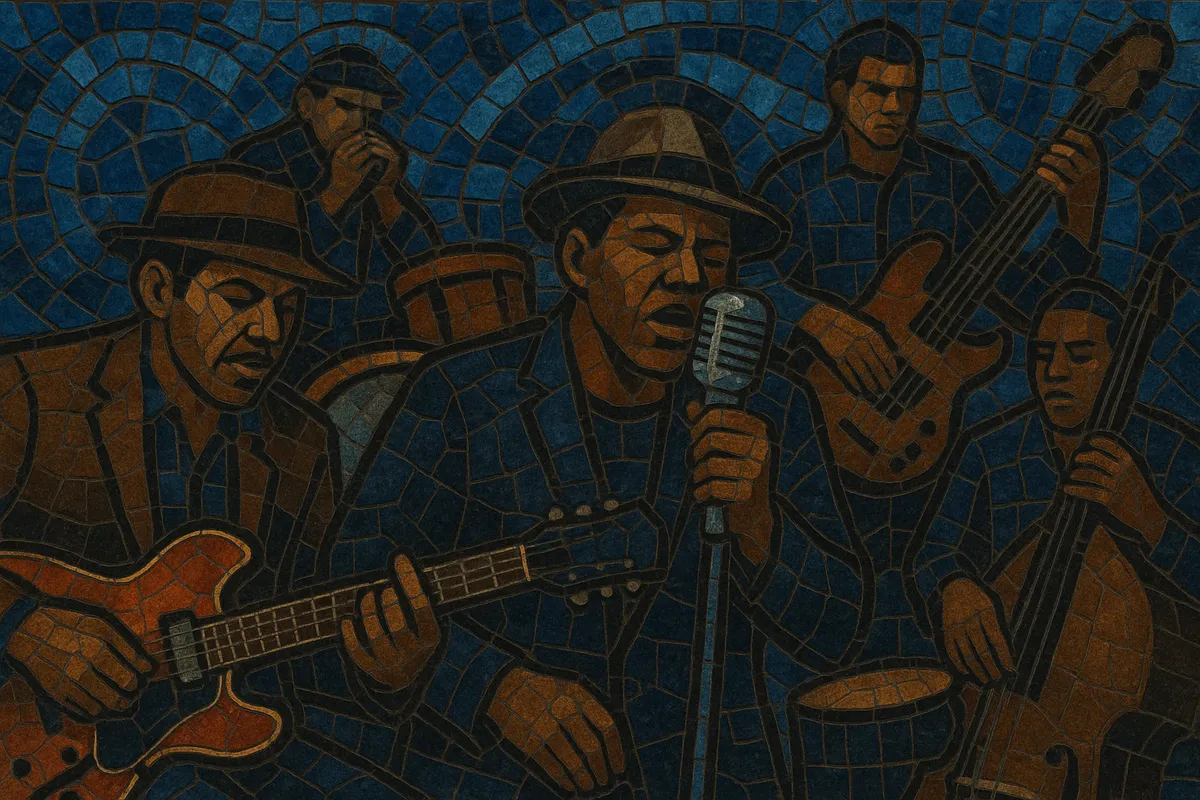
Electric blues is a postwar evolution of the blues that centers on amplified instruments and a compact, urban band sound. It emerged when rural blues musicians brought their music to industrial cities and adopted electric guitar, amplified harmonica, bass, drums, and piano to cut through noisy clubs.
Musically, electric blues relies on 12‑bar and 8‑bar forms, dominant‑7th harmony, and a swung shuffle or boogie groove. Guitarists use string bends, wide vibrato, double‑stops, turnarounds, and call‑and‑response with vocals and harmonica. Amplified harmonica (often through a bullet mic and small tube amp) acts like a lead horn, trading riffs with the guitar. The sound is thick, gritty, and vocal, with tube‑amp breakup, subtle reverb, and sometimes tremolo.
Lyrically, themes cover migration, love and betrayal, work and hardship, and the pulse of city life. Regionally, Chicago became the emblem of the style, but strong variants also blossomed in Memphis, Detroit, and Texas.
Electric blues took shape during and after World War II as part of the Great Migration, when Southern musicians moved to Northern cities. Amplification solved a practical problem: being heard in crowded bars. T‑Bone Walker’s late‑1930s/early‑1940s recordings established electric guitar as a lead voice, while postwar Chicago fostered a tougher, ensemble‑driven sound with electric guitar, amplified harmonica, piano, bass, and drum kit.
Independent labels like Chess and Vee‑Jay recorded signature artists who defined the idiom. Muddy Waters, Howlin’ Wolf, Little Walter, and Elmore James popularized the raw, riff‑oriented band format with shuffles, stop‑time hits, and concise, vocal‑like solos. At the same time, Texas and West Coast scenes leaned a bit jazzier and smoother, reflecting swing and jump‑blues currents.
Electric blues recordings crossed the Atlantic, profoundly influencing British musicians who amplified and intensified the style. Bands and players connected to this boom fed the rise of rock and roll, blues rock, and eventually hard rock and heavy metal, while U.S. artists like B.B. King and Albert King brought a more modal, singing guitar approach into soul‑inflected contexts.
The electric blues vocabulary underpins huge swaths of rock. Periodic revivals and festival circuits have kept the style vibrant, with new generations (often blending funk, soul, and contemporary production) reaffirming the essential grammar: dominant‑7th harmony, expressive bends and vibrato, and a danceable shuffle or boogie groove.

